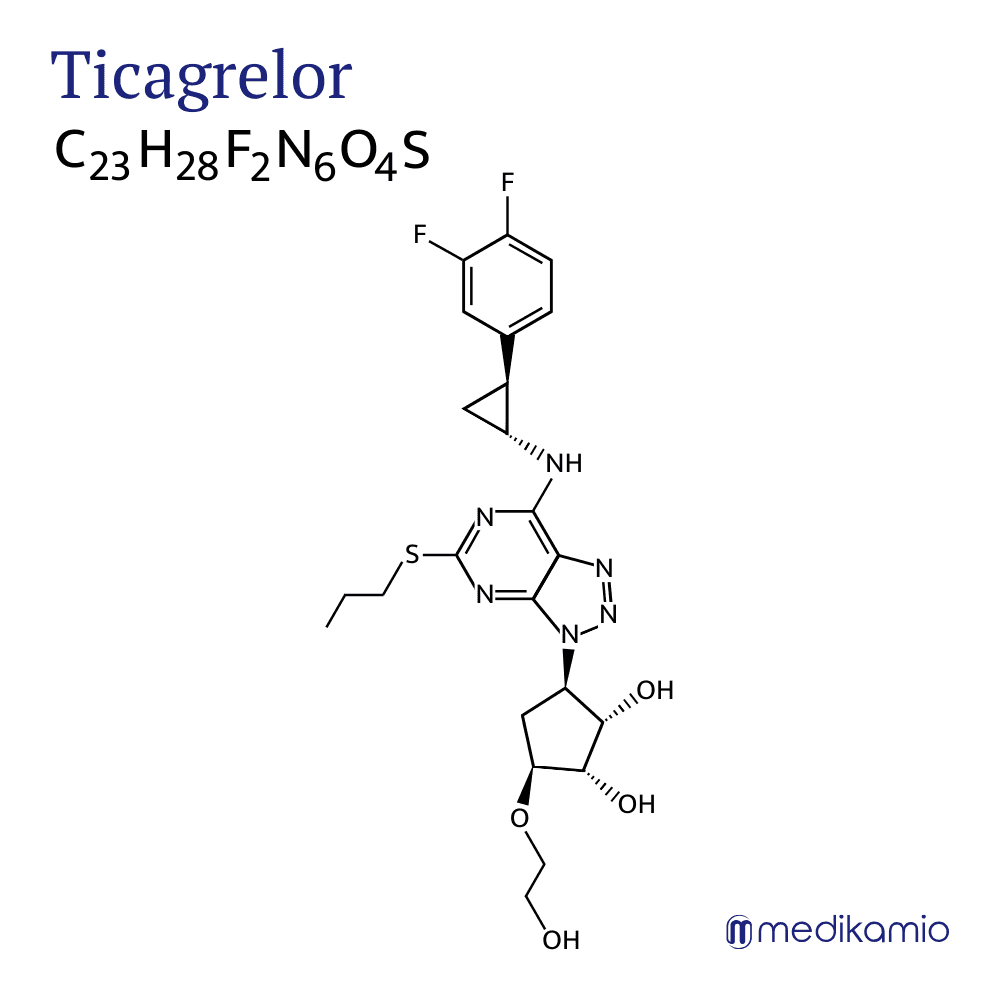Ticagrelor works by binding to the P2Y12-ADP receptor in the blood platelets (thrombocytes) and thus blocking the binding of ADP (adenosine diphosphate) to this receptor (antagonism). The binding of ADP to this receptor causes the blood platelets to clump together, thereby "thickening" the blood, which can be observed in cuts or small wounds and is also desirable. After activation of the receptor by ADP, the platelets change their shape and form protrusions (pseudopodia), whereby they adhere to each other and can thus cause blood to stop flowing in small wounds. This effect is disadvantageous in the blood vessels because clot formation (thrombus formation) in the blood vessels should be prevented so that they do not become blocked. In the case of a heart attack or stroke, however, it is precisely this thrombus formation that occurs and the blood vessel is partially(angina pectoris) or completely(heart attack or stroke) blocked by this clot (thrombus). However, this is prevented by blocking the P2Y12 receptor with ticagrelor. Ticagrelor is not only used in acute cases, but can also be used as a long-term therapy to minimize risk.
Ticagrelor is metabolized in the liver and excreted via faeces and urine. The bioavailability of the active ingredient, i.e. the percentage of the active ingredient available in the blood, is 36%. The half-life, i.e. the time the body needs to excrete half of the active substance, is around 8 hours. The maximum plasma concentration (Cmax), i.e. the maximum concentration of the active substance in the blood plasma (liquid cell-free part of the blood) is reached after about 1.5 hours.


